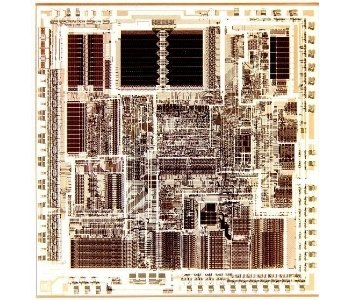|
The 386 Processor - 80386
Provided significant enhancements over its predecessor, the Intel 80286 processor.
The 386 processor, or rather 80386 processor, was introduced by Intel in the year of 1985 following the success of the 80286 Processor. A significant advancement from the 80286, it was used in PC's until 1990 when it was superseeded.
The 32 bit data address bus gave the chip the superb ability to work with lots of RAM, a full 4GB of RAM to be exact and an amazing 64TB of virtual (hard disk) memory. In addition to this, the 386 was the first chip to use instruction pipelining, this technique allowed the processor to start working on the next instruction before the one before had been completed. While the 386 chip could operate in both real mode and protected mode (just like like the 80286), it also had another trick up its sleeve, runing in something called 'virtual real mode'. This mode allowed several real mode sessions to be run all at a time. A multi-tasking type of operating system like Windows was needed to achieve this though. 1988 saw Intel release the 386SX, which was a cut down low-fat version of the 386. Although it used 16 bit data bus instead of the 32 bit, and as such it was slower, but it thus used less power. This was a forward step to aid Intel to promote the chip into the entry level end desktops and also portables. A little later in 1990 Intel released the 80386SL, this one was packed with 855,00 transistors, a version of the 386SX processor with ISA compatibility and power management circuitry built in. 386 processor chips were designed to be user friendly. All the integrated chips (IC's) in the 80386 family were pin-for-pin compatible so upgrading was straightforward. They were also binary compatible with the previous 186 integrated chip family, this meant that existing software all 186 users had did not need renewing. Additionally, users would notice a massive speed increase when using the exactly the same software as before after doing an upgrade. This would fully justify the cost and cause a word of mouth buzz. The 386 also offered power friendly features such as low voltage requirements and System Management Mode (SMM) which could power down various components to save power. Overall, this chip was a a very big step for chip development kind. Ploughing the road for future chips, it set the standard that many later chips would follow and exceed. It offered a simple design which developers could easily design for and utilise. Exciting times and stuff eh! Return to Computer Hardware Terminology page. Go forward to Specification page. Return from Intel 386 Processor to Home page.
PLEASE feel free to use this button and donate You Are Secure! so Machine-Information-Systems.Com can keep helping you.
|
